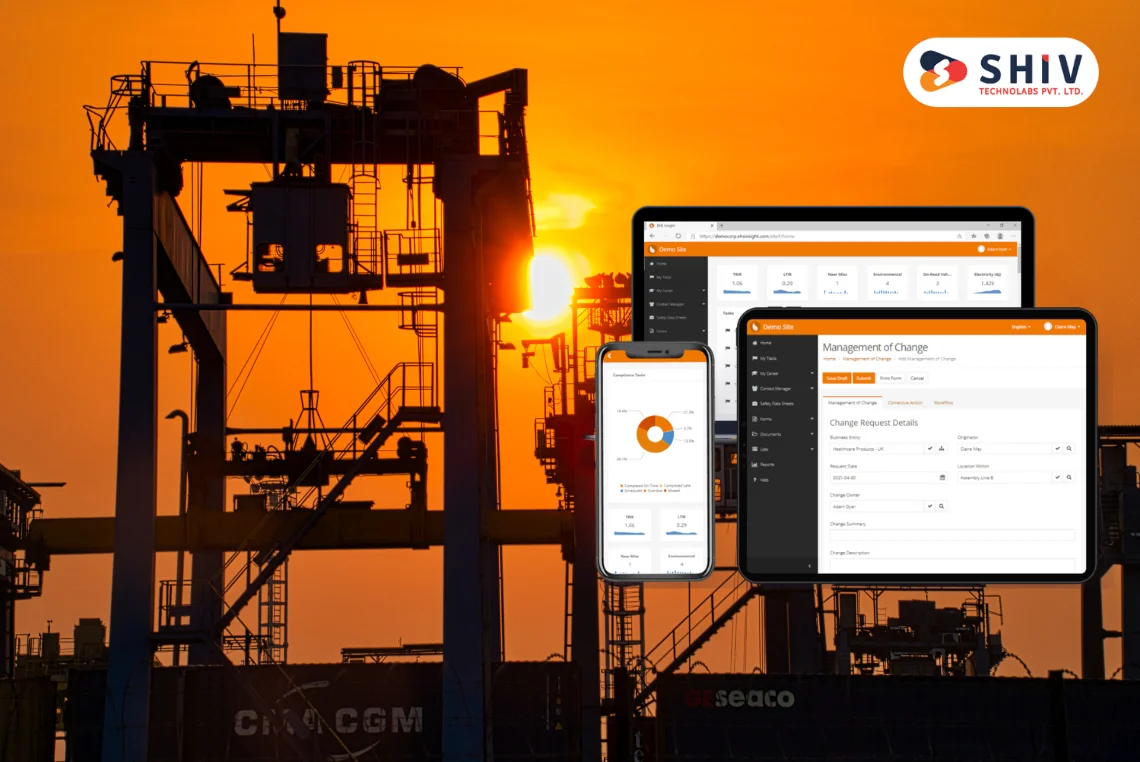Table of Contents
Readers come for clear content and quick pages. Your team needs a CMS that stays fast as traffic, features, and editors grow. Off-the-shelf tools often hit walls once you add custom workflows or complex content models.
React.js builds a crisp, responsive admin that writers enjoy. Node.js serves APIs that handle spikes and real-world load. Together, they form a CMS that stays quick, secure, and simple to extend.
In this guide, you’ll see the core layout, the must-have modules, and step-by-step build notes for a high-scale stack with React.js and Node.js. Need expert help? Point readers to custom CMS development with React.js and Node.js
Benefits of Building Custom CMS
Both React.js and Node.js are known for their capabilities to build custom solutions. The solutions are easily scalable and allow future upgrades. With content being the lifeline for digital platforms and businesses, custom CMS has become the preferred choice.
Unlike the pre-built CMS available as plugins, custom CMS can be created to address specific business needs. They are built to enhance the content strategy in alignment with the brand communication. Custom CMS also enables the integration of CMS capabilities across the digital platform at low a cost.
Build a Scalable Custom CMS with React.js and Node.js

In recent times the content management system capabilities have grown substantially. And, this has been made possible through improvements in CMS development architecture. Node and React content management systems are among the most robust and scalable CMS powering numerous major business sites.
React is known for its capabilities to create scalable designs through its component-based architecture. Node offers an agile backend that comes with enhanced capabilities to grow with the solution. Together they allow the creation of a CMS that can scale with time and is extremely versatile. It can be modulated as per business requirements, thereby offering customization options.
React and Node, both working on the javascript framework, make them the ideal partners for building a solution like CMS. Moreover, React is the best choice for creating the front end. The component-based design also allows rapid development with custom components. This allows the development of a robust CMS custom-made to business needs.
Moreover, it can be scaled as the changes grow. Developers can easily create an interactive UI for the users wherein small functional components allow different functionalities. The user is not restricted by the framework. The framework evolves and allows the user to modify the content presentation as demanded.
On the other hand, Node is the perfect choice for scalable backend development. Node.js can handle multiple requests simultaneously without compromising the operational speed. This is perfect for CMS wherein there are numerous user inputs in real time.
You can have your custom CMS developed with Shiv Technolabs. Our team of experienced developers will provide the best-performing CMS that suits your business needs.
How to Build a CMS with React.js and Node.js?
If you are planning on getting a custom CMS developed for your business, the best option is to hire a React.js development company. A custom CMS with React and Node is exactly what will give your content marketing the required tech boost! So, hiring the right developer team is the first step towards having an agile and scalable CMS for all your business channels.
However, simply getting the React.js development services provider is not enough. Since you are planning to have your custom CMS built, it is important to know the steps involved. Let’s discuss the process before proceeding to hire anyone. We will be going through a high-level overview of the process of development of CMS with React.js and Node.js.
# Determine the Architecture
You will need to decide on the technology stack. For that, you will need to first know the architecture. There are three essential components to building the CMS – frontend, backend, and database.
As already discussed, React.js is best suited to create the front end. It will allow fast development and easy management of any change that might be needed at any time.
The backend is to be developed on Node.js. Having the javascript framework for both frontend and backend will ensure faster and smoother performance.
Database management will depend on the data to be handled. For a simple CMS that will handle unstructured or semi-structured data, MongoDB is the preferred choice. It has document-based NoSQL architecture.
If you are working with a relational database, you should opt for RDBMS like MySQL or PostgreSQL. They can handle complex problems using SQL queries. This option is only when it’s necessary.
# Identify the Components Needed for Development
The next step is to identify the components that the developers will require to create the CMS. These components will also help you determine the development cost while discussing the project.
First, you need to have a secure authentication system. Any CMS has multi-level users with role-based permissions. This can only be managed through user authentication. The user authentication module can easily be created using Node.js. There are numerous guides available providing detailed information on how to authenticate users using Node.js.
You will be required to decide on the content model which will determine the database to be used. Depending on the data and the structuring of the content, you need to finalize which database management system will best suit your purpose.
Node.js is also to be used for the CMS API integrations. When the CMS is developed, the API needs to be developed with the help of Node.js.
The CMS dashboard and rendering of the content will be managed using React and JS. React will allow fast development and upgrading when needed. It is also known to create a robust front end.
# Implementation Steps To Be Followed
Now that you have the basics sorted, it is time to get the best Node.js and React.js development company. You will need to discuss your requirements in detail. Since there are multiple aspects involved with the development, ensure that they have a robust development team.
You can get a better understanding of the quality and experience of the agency by getting an outline of the implementation steps that they will follow. It should be mentioned in the project delivery outline. For your understanding, here is a step-by-step guide that will help you compare.
For backend development, Node.js will be used. It will start by setting up the Node.js project with a JavaScript framework like Express.js. You will also need to install all necessary packages. This will also include packages for the database management system.
For backend access, a user authentication module needs to be prepared. It will need an authentication system. Ensure that a highly secure system is being used to prevent future problems.
Finally, the content model and the RESTful API need to be created. The RESTful APIs will help the users create, read, update, and delete content using the CMS.
Next comes the backend development. It starts with React.js installation. The development team will create the project with the Create React App. The next step is to install all the necessary packages. Finally, the development of the CMS platform dashboard begins.
The dashboard functionalities using React.js will be handled by Node.js in the backend. You will need to ensure that the functionalities that you requested are all included during the development process.
Shiv Technolabs has a robust team of developers who are extensively experienced in custom CMS development. Connect today to discuss the scope of your project.
Must-Have Features of a Scalable CMS

The custom CMS needs to have some basic functionalities irrespective of the business. These are to be implemented at the time of development. Let’s take a look at them:
- Secure Login: Login should be secured and prevent unauthorized access. Dealing with unauthorized access is one of the major problems that CMS owners face. It is the gateway to various exploits of the website or digital asset. Login authentication is a critical point where these attacks can be stopped.To secure the login part multiple precautions are taken. SSL/TLS is mandatory to ensure security during data transmission. Secure password hashing and salting is another layer of protection. User input validation helps with the prevention of XSS attacks. Rate limiting is implemented to secure the CMS against brute force attacks.
- Content Management: This is the basic purpose of creating the CMS. It should be able to manage the creation and editing of the content with ease. Considering that most users are accustomed to the MS Office interface and other similar interfaces, it is best to use a similar interface with the content management forms.
- Content Delivery Network: CDN or content delivery network helps with the delivery of the static assets in the content. It helps with making the content available to the user faster and easily along with the CMS. Integration of CDN is extremely beneficial in the long run.
CDN or content delivery network helps with the delivery of the static assets in the content. It helps with making the content available to the user faster and easily along with the CMS. Integration of CDN is extremely beneficial in the long run.
There are multiple other features that can be incorporated into the CMS. Depending on business requirements and the use of the CMS these can be decided.
You can connect with Shiv Technolabs for the development of your custom CMS with React.js and Node, js. Our team of developers will help you through each step. You can decide on the features you require and plan future developments.
FAQs
Why use React.js and Node.js to build a scalable CMS?
React gives a fast editor UI. Node serves non-blocking APIs that handle many requests. One language keeps builds simple.
How do I scale a React + Node CMS for high traffic?
Add instances behind a load balancer, cache reads with Redis, use a CDN for assets, and move heavy jobs to a queue.
Which database fits a React Node CMS?
Pick PostgreSQL for strong relations and reports. Choose MongoDB for flexible content types and quick changes.
Can this stack work as a headless CMS?
Yes. Node exposes clean REST/GraphQL APIs, while React powers admin and front ends across web, mobile, and devices.




















